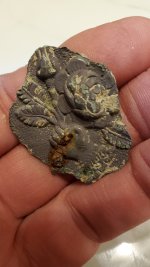lokiblossom
Bronze Member
- Thread starter
- #241
On POST# 213 on this thread, Franklin responded that 'both" were there.
The question still remains, did de Villers along with other escaped Templars from La Rochelle sail with Sinclair to Nova Scotia, and is de Villers listed with the Templars in Diana Jean Muir's "THE LOST JOURNALS OF PRINCE HENRY SINCLAIR"?
There is some indication that de Villers was not an old man in 1307, so assuming he was in his 40's in 1307 I doubt if he would have accompanied Sinclair in 1398 or what ever year Sinclair is said to have made the trip. As I mentioned, Sinclair is Franklin's area and he knows much more about it than me!
Cheers, Loki








